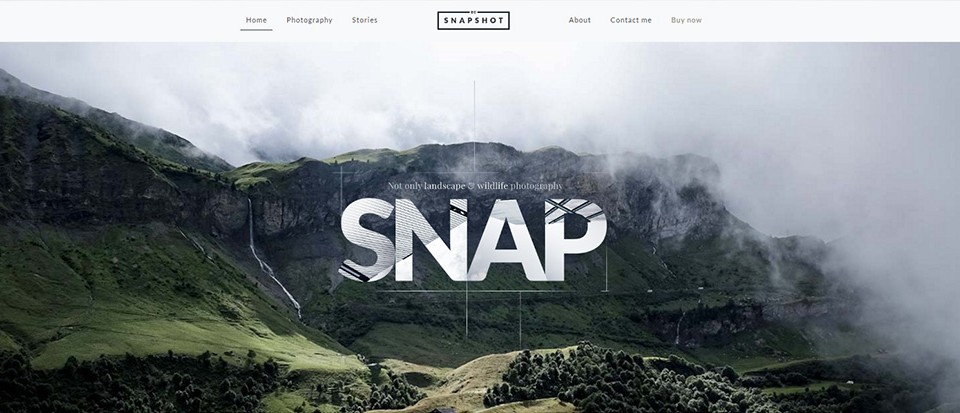
Do You Really Need Mockups?
October 12, 2016
Trends in Web Design – Video Backgrounds
November 15, 2016Web designers are usually up to speed on the latest design trends, but they can still benefit from tips on how to best go about their business, how to work from a plan, or how to help a client put together a detailed, workable, web design brief according to website KPIs. The focus here is on the key elements involved in building a website design brief template the client, with the help of the designer, can use to develop his/her brief.

A sound, well-structured brief helps you prioritize your tasks and solidifies your perspective on the project.
To be effective, a design brief typically needs to incorporate these key elements:
- the website’s goals and objectives
- the target audience identified in detail or expressed as a persona
- the scope of the project
- required materials
- website style
- any definite “do nots”
Convincing your clients that, by addressing each of these key elements in detail in the brief will make your work easier, and pay dividends to them as well.
The Template: Each key element section must play its part, to understand the total picture
Goals and Objectives
If you don’t know what your client wants, it’s hard to propose a satisfactory or viable solution. The same is true if a client is uncertain or vague on the subject. This is why the design brief is often so valuable.
Budget and Schedule

Having a schedule to work to can be a definite help to the freelancer.
Some clients may request a quote before sharing budget information with you. While this sometimes has merit, you need to convince them that, by sharing their budget information, they will receive the greatest value for their money. Schedules are also important. When a client insists on a certain deadline, it you should know the reason.
Target Audience

The ability to create an audience persona is key to building a competitive website.
Understanding what a client wants, is half the battle. Understanding what the client’s audience wants or needs, is the other half. If the audience persona is not well-defined, you risk flying blind. Ask your client upfront who the website must appeal to.
Project Scope
A custom solution or an adaptation of an existing timeline template? A full-blown e-commerce site, or a brochure-type site? Knowing the right answer is key to determining your starting point. Sometimes the scope is obvious, but it still should be confirmed. One advantage of pre-built websites is that changes in scope are generally easier to deal with.
Available Materials

Marketing materials are often indicative of what a client values most.
Ask your client to provide the necessary tools (a logo, product photos, about us information), or helpful ones (promotional material). If what you require is not available, and you cannot design them yourself, it might be best to refer your client to another designer. However, there are specialists for specific design patterns, so if you require a web design for retail websites, it is best to locate a professional that is deeply interested in this sector.
Style

If the client cannot provide examples of the overall style, you may elect to present a few possible examples of your own to settle.
When clients have difficulty expressing the style they want, one approach would be to ask for examples of designs they like. Another, is to present the client with a selection of different styles. Pre-built website examples might come in handy here.
“Do Nots”
There may be certain types of layouts, special effects, or other features a client does not like. Knowing these dislikes early on will save you time. Pre-built website prototypes could be helpful here.
How to Explain to Your Client Why a Web Design Brief is Necessary
Unless they understand the purpose and benefits of a briefing, clients may view the exercise as so much extra work. Here is a summary of the most important steps you can take to gain your client’s cooperation:

- In describing their business or product line, it’s only natural that some clients will take a sales approach. Remind them that you are there to gather information needed to assist them, and not to make a purchase or grade their business. Tell a client that by knowing the strong and weak points of the business, and/or the pros and cons of a product, you can provide a much better web design solution.
- If the client complains of bad reviews, they could be the result of inferior products or services, but quite often the reviews are based on misunderstandings, misinformation, or website shortcomings that could easily be fixed. Solutions might involve an improved registration form or purchasing process, the addition of a wish list or a live chat box, or content that more accurately describes products or services. These are all areas where you can help, especially when a client is not skilled in marketing, or does not fully understand the relationship between marketing and web design.

Fine tuning is important. Brilliant projects always start with a complete, well-defined brief.
- The entire purpose of a successful briefing stage is to avoid having to implement version control techniques to keep track of changes because the client incorrectly assumed you already knew what he/she wanted. A situation like this can be avoided if you take an active role in collaborating with the client when finalizing the brief.
- Be sure that the ultimate goal is mentioned in the brief, along with metrics that will be used to measure progress toward reaching it. You have a major role to play here, in that your design will be addressing what is important to the client in growing his/her business.
The above is only a starting point. It may be necessary to delve deeper into the competition, or the client’s place in his/her niche. You might benefit from knowing more about the client’s future business goals or marketing plans; anything that will help you fill in any blanks in your vision of what the final product should look like.




